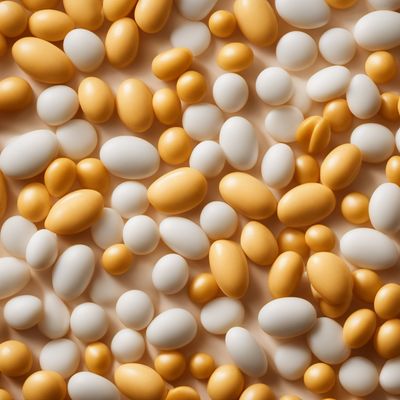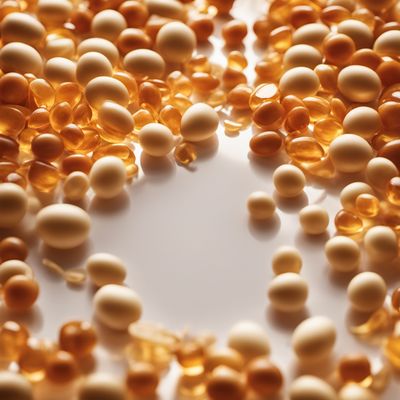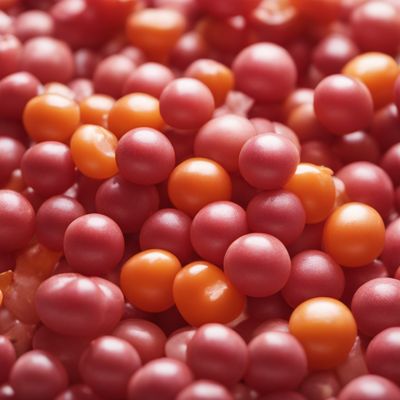
Ingredient
Vitamin B5 (pantothenic acid)
The Essential Nutrient: Unveiling the Power of Vitamin B5
Vitamin B5 is a water-soluble vitamin that is characterized by its white, crystalline powder form. It has a slightly bitter taste and is odorless. This essential nutrient is known for its ability to support energy metabolism, promote healthy skin, and aid in the synthesis of various compounds in the body. Its versatility lies in its stability, making it suitable for a wide range of culinary applications.
Origins and history
Pantothenic acid was first discovered in the early 20th century by a Swiss scientist named Roger J. Williams. The name "pantothenic acid" is derived from the Greek word "pantos," meaning "everywhere," as it is found in almost all living organisms. It is naturally present in many foods, including meat, vegetables, and whole grains. Throughout history, this essential nutrient has been recognized for its role in maintaining overall health and well-being.
Nutritional information
Vitamin B5 is an essential nutrient that supports energy metabolism, aids in the synthesis of proteins, carbohydrates, and fats, and contributes to the maintenance of healthy skin. It provides approximately 7 calories per gram.
Allergens
There are no known allergens associated with vitamin B5.
How to select
When purchasing vitamin B5 supplements, it is important to choose reputable brands that adhere to quality standards and have undergone third-party testing for purity and potency. For foods rich in vitamin B5, opt for fresh produce, whole grains, and lean meats. Look for vibrant colors, firm textures, and check for any signs of spoilage.
Storage recommendations
To maintain the freshness and quality of vitamin B5-rich foods, store them in a cool, dry place away from direct sunlight. For supplements, follow the storage instructions provided by the manufacturer.
How to produce
Vitamin B5 is not produced directly by individuals, as it is a naturally occurring nutrient found in various foods. However, individuals can ensure an adequate intake of vitamin B5 by incorporating a balanced diet that includes foods rich in this essential nutrient.
Preparation tips
To maximize the nutritional benefits of vitamin B5, it is best to consume foods in their raw or minimally processed form. However, cooking methods such as steaming, sautéing, or boiling can also retain a significant amount of this essential nutrient. Avoid overcooking or prolonged exposure to high heat, as it may lead to nutrient loss.
Culinary uses
Vitamin B5 is commonly used in a variety of culinary applications, including the fortification of processed foods, such as cereals, bread, and pasta. It is also used as a nutrient supplement in beverages, energy bars, and dietary supplements.
Availability
Vitamin B5 is commonly available worldwide and can be found in a wide range of foods, including meat, poultry, fish, eggs, dairy products, legumes, whole grains, and vegetables.
More ingredients from this category » Browse all

Vitamin B9 (folic acid, folinic acid)
The Essential Nutrient for Cell Growth and Development

Vitamin C (ascorbic acid)
The Immunity Booster: Unveiling the Power of Vitamin C

Vitamin A (retinol, carotenoids)
The Vision Booster

Vitamin B3 (niacin, niacinamide)
The Essential Nutrient: Unveiling the Power of Vitamin B3

Vitamin D (cholecalciferol, ergocalciferol)
"The Sunshine Vitamin: Unlocking the Power of Vitamin D"

Vitamin E (tocopherols, tocotrienols)
The Antioxidant Powerhouse

Vitamin B12 (cyanocobalamin, hydroxocobalamin, methylcobalamin)
The Essential Vitamin: Unveiling the Power of B12

Vitamin B1 (thiamine)
The Essential Energy Booster

Vitamin K (phylloquinone, menaquinones)
The Mighty Nutrient: Unveiling the Power of Vitamin K

Vitamin B2 (riboflavin)
The Radiant Nutrient

Vitamin B7 (biotin)
The Beauty Vitamin: Unveiling the Wonders of Biotin

Vitamin B6 (pyridoxine, pyridoxamine, pyridoxal)
The Essential Nutrient Trio: Unveiling the Powers of Vitamin B6